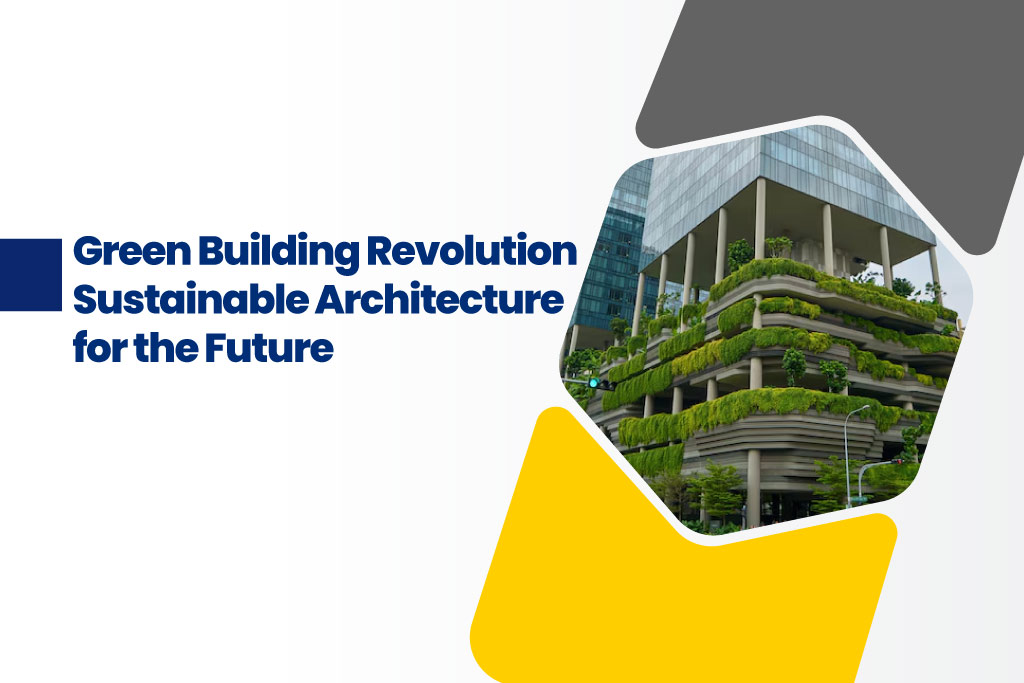As the world faces increasing environmental challenges, the green building revolution is transforming the architecture industry. Sustainable architecture aims to minimize the negative impact of buildings on the environment through innovative design, construction, and operation practices. This blog explores the principles, benefits, and future trends of sustainable architecture, highlighting the role of education and the contributions of institutions like Karpagam Architecture, one of the leading architecture colleges in Coimbatore.
Principles of Sustainable Architecture
Energy Efficiency and Renewable Energy
Sustainable architecture prioritizes energy efficiency by incorporating renewable energy sources such as solar, wind, and geothermal power. Buildings are designed to reduce energy consumption through advanced insulation, energy-efficient windows, and smart building systems that optimize energy use.
Water Conservation and Management
Water conservation is a key principle of sustainable architecture. Techniques such as rainwater harvesting, greywater recycling, and low-flow fixtures help reduce water usage. Efficient irrigation systems and drought-tolerant landscaping also contribute to water conservation.
Sustainable Materials and Resources
Using sustainable materials and resources is crucial for green building. This includes selecting materials with low environmental impact, such as recycled, reclaimed, or locally sourced materials. Sustainable architecture also emphasizes the use of non-toxic, durable, and renewable materials.
Indoor Environmental Quality
Improving indoor environmental quality is essential for the health and well-being of building occupants. Sustainable buildings incorporate natural ventilation, high-quality air filtration systems, and abundant natural light. The use of non-toxic materials and proper humidity control further enhance indoor air quality.
Site Selection and Land Use
Sustainable architecture considers the environmental impact of site selection and land use. This involves choosing locations that minimize disruption to natural ecosystems and promote urban density to reduce sprawl. Green buildings often feature green roofs, walls, and other landscaping elements that enhance biodiversity.
Benefits of Green Buildings
Environmental Impact Reduction
Green buildings significantly reduce environmental impact by conserving resources, lowering greenhouse gas emissions, and minimizing waste. Sustainable architecture helps combat climate change and preserve natural ecosystems.
Economic Advantages and Cost Savings
Sustainable buildings offer economic benefits through reduced operating costs, energy savings, and increased property value. While initial construction costs may be higher, the long-term savings and return on investment make green buildings financially viable.
Health and Well-Being of Occupants
Green buildings promote the health and well-being of occupants by providing better air quality, natural lighting, and comfortable living environments. Studies show that sustainable buildings enhance productivity, reduce absenteeism, and improve overall occupant satisfaction.
Enhanced Community and Societal Benefits
Sustainable architecture contributes to community well-being by creating resilient, adaptable, and inclusive spaces. Green buildings foster a sense of community, improve public health, and promote sustainable living practices.
Case Studies of Sustainable Architecture
Examples of Green Buildings Around the World
Notable examples of sustainable architecture include the Bullitt Center in Seattle, known as the “greenest commercial building in the world,” and Bosco Verticale in Milan, a pair of residential towers featuring vertical forests. These buildings showcase innovative sustainable design and technologies.
Innovative Features and Technologies Used
Green buildings utilize cutting-edge technologies such as energy-efficient HVAC systems, photovoltaic panels, green roofs, and advanced water recycling systems. These features demonstrate the potential of sustainable architecture to create eco-friendly and efficient buildings.
The Role of Education in Promoting Sustainable Architecture
Importance of Architectural Education in Sustainability
Architectural education plays a vital role in promoting sustainability. By integrating sustainable design principles into the curriculum, architecture schools prepare future architects to create environmentally responsible buildings.
Programs Offered by Architecture Colleges in Coimbatore
Architecture colleges in Coimbatore, including Karpagam Architecture, offer programs that emphasize sustainable design and green building practices. These institutions provide students with the knowledge and skills needed to lead the green building revolution.
Contributions of the Best Architecture Colleges in Coimbatore
The best architecture colleges in Coimbatore contribute to sustainable architecture through research, innovation, and community engagement. These institutions collaborate with industry partners to advance sustainable practices and educate the next generation of architects.
How Karpagam Architecture is Leading the Green Building Revolution
Overview of Sustainable Practices at Karpagam Architecture
Karpagam Architecture is committed to sustainability through its innovative curriculum, research initiatives, and campus practices. The institution integrates green building principles into its programs, preparing students to become leaders in sustainable architecture.
Curriculum Focus on Green Building and Sustainable Design
The curriculum at Karpagam Architecture includes courses on sustainable design, energy-efficient systems, and environmental impact assessment. Students gain hands-on experience through projects and internships focused on green building.
Research and Innovation in Sustainable Architecture
Karpagam Architecture fosters research and innovation in sustainable architecture. Faculty and students collaborate on projects that explore new materials, technologies, and design strategies to advance the field of green building.
Future Trends in Sustainable Architecture
Emerging Technologies and Practices
Future trends in sustainable architecture include the use of advanced materials such as bioplastics and self-healing concrete, as well as innovations in energy storage and smart building systems. These technologies will further enhance the efficiency and sustainability of buildings.
Predictions for the Future of Green Building
The future of green building will likely see an increased focus on net-zero energy buildings, circular economy principles, and resilient design. Architects will play a crucial role in addressing global challenges such as climate change and urbanization through sustainable architecture.
Role of Architects in Promoting Sustainability
Architects have a responsibility to promote sustainability by advocating for green building practices, educating clients, and designing environmentally responsible buildings. Their expertise and creativity are essential for creating a sustainable future.
Conclusion
The green building revolution is transforming the architecture industry, offering a path to a more sustainable and resilient future. By embracing sustainable design principles, architects can create buildings that benefit the environment, economy, and society. Educational institutions like Karpagam Architecture are at the forefront of this revolution, preparing students to lead the way in sustainable architecture. Join Karpagam Architecture, one of the best architecture colleges in Coimbatore, to embark on a unique educational journey that empowers you to make a positive impact through sustainable design.






